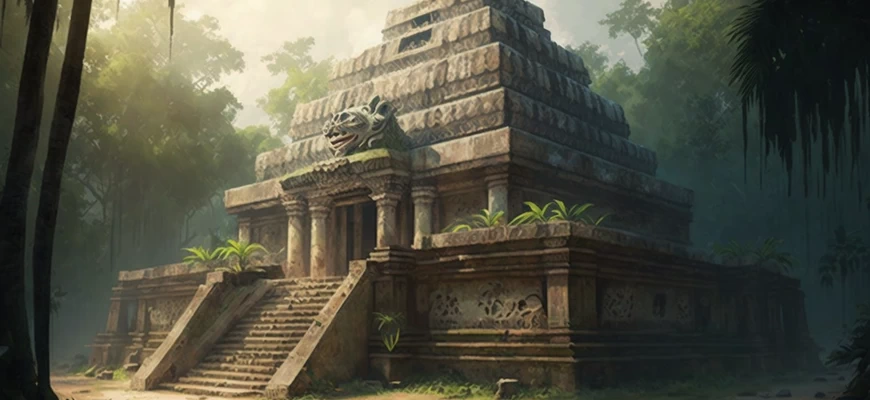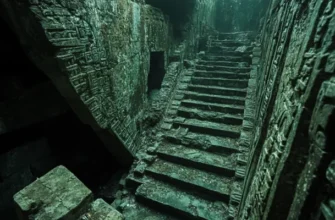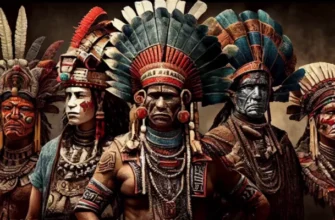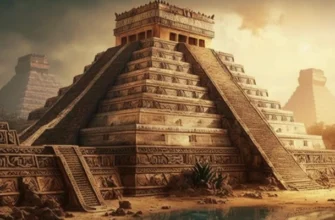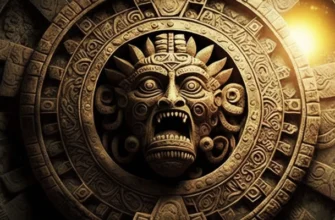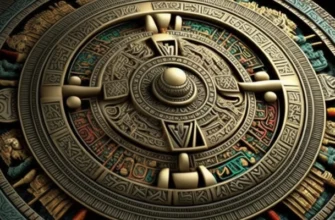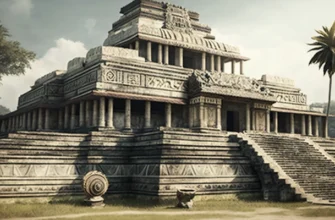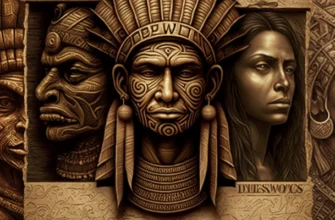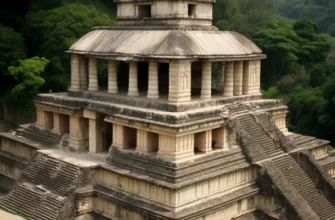Mayan art is one of the most defining elements of the culture of this ancient civilization. It has been preserved in the form of various works such as murals, reliefs, sculptures, manuscripts, and others. The Maya used art to transmit their religious and cultural heritage, as well as to emphasize their social and political importance. Mayan art techniques and styles changed over time and reflected the characteristics of different periods of this civilization. Today, Mayan visual arts are studied and protected as one of the most valuable elements of the world’s cultural heritage.
History and context
Mayan art is an art form that refers to the ancient Mayan civilization that existed in Mexico, Belize, Guatemala, Honduras, and El Salvador from about 2000 BC until the arrival of the Spanish in the 16th century.
Although the Maya are known for their architectural achievements such as pyramids, palaces, and other buildings, they were also quite understanding in the visual arts. The most famous forms of Mayan art are statues, reliefs, murals, manuscripts, and other forms of decorative art.
Mayan fine art differs from other forms of ancient art in that it contains a large number of symbols and hieroglyphs that had their own meanings. Such symbols and hieroglyphics were used in various forms of art, including statues and reliefs, helping to tell stories and convey Mayan beliefs.
One of the most famous forms of Mayan art is the manuscripts that contain hieroglyphs and images. These manuscripts were written on white paper collected from tree bark and were important in Mayan culture. They contained information about astronomy, magic, religion, and other aspects of Mayan life.
Another important form of Mayan art is reliefs, which depicted gods and other important figures in the religion.Reliefs made of stone were used to decorate pyramids and other buildings. They depicted Mayan gods and heroes, sometimes with special hieroglyphics that revealed their role in Mayan mythology and history. The reliefs also contained detailed depictions of birds, animals, and plants that symbolized various things in Mayan culture.
In addition to the reliefs, Mayan art also included statues that were made of stone, clay, and other materials. These statues, depicting gods, humans, and animals, were often large in size and richly detailed.
Other forms of Mayan art included mosaics and murals. Mosaics consisted of small stones and pieces of glass that were placed on the walls and floors of buildings. Murals were painted on the walls of palaces and temples and depicted various scenes from Mayan life.
Mayan art was extremely important to the Mayan culture, which shows their artistic skill and beliefs. Symbolism and images found in Mayan art are studied and researched by researchers and archaeologists from all over the world, helping to better understand the culture and history of this ancient civilization. In addition, Mayan artists used a large number of techniques and materials, which is a testament to their skill and knowledge.
Mayan art was also associated with religion and worship. Many of the images and symbols found in Mayan art are related to Mayan mythology and beliefs. The Mayan artists believed that by creating images of their gods and heroes, they could attract their attention and receive their grace.
In the 16th century, after the arrival of the Spanish conquerors, Mayan art gradually disappeared. Many temples and buildings were destroyed, and images of gods and Mayan symbols were banned. However, some masters preserved their traditions and knowledge, which allowed them to preserve some of the Mayan art to our time.
Today, Mayan art remains an important source for studying Mayan culture and history. Many elements of Mayan art have been restored, and others are in museums and private collections around the world. The history and context of Mayan art provides us with an opportunity to better understand this ancient civilization and the values it reflects.
Mayan techniques and styles
Mayan art was extremely developed and they used a variety of techniques and styles in their works.
Murals:
Mayan murals were painted on walls and ceilings (vertical slabs), and depicted a variety of scenes from daily life, as well as mythological and religious events. The technique consisted of applying a thin layer of plaster to the wall, which hardened and became the basis for the colors.
Reliefs:
Maya reliefs were made on stone or wall, and depicted complex scenes from mythology, history, and daily life. Sometimes the reliefs were used to decorate the entrances to palaces and temples. The technique was to remove unnecessary parts of the stone, leaving the raised details.
Sculptures:
Maya sculptures were made of stone, wood, and other materials, and represented people, animals, and deities. Sculptures were often used to decorate temples and other religious buildings.
Manuscripts:
The Maya created manuscripts from many materials, including papyrus, leather, or tree bark. The manuscripts contained stories, myths, astronomical tables, and other types of knowledge. The technique of execution was handwriting and drawing with paints and a pen.
In general, Mayan art is characterized by a high level of detail and realism. Their works reflect a rich history and culture.
Concluding remarks
Mayan art is one of the most impressive and recognized art forms of the world’s ancient civilizations. Its significance for the modern world lies in the fact that it helps us to better understand Mayan culture and traditions, their view of the world, and contributes to the preservation of this cultural heritage.
One of the most recognized aspects of Mayan art is their exceptional skill with color and geometric shapes. This is reflected in their ceramics, fabrics, walls and reliefs, which are still extremely impressive to our eyes.
The Maya also had a great influence on modern art culture. Many artists and designers are encouraged to use Mayan motifs and ideas in their work. The Maya have become a source of inspiration for many contemporary artists who seek to recreate Mayan traditions and techniques in their own creations.
In addition, Mayan fine art is important for understanding the history of the Mayan civilization. The Maya were known to be among the most advanced peoples in the world, and their achievements in architecture, mathematics, and astronomy were significant. Their art can help us better understand these achievements and learn about their history
